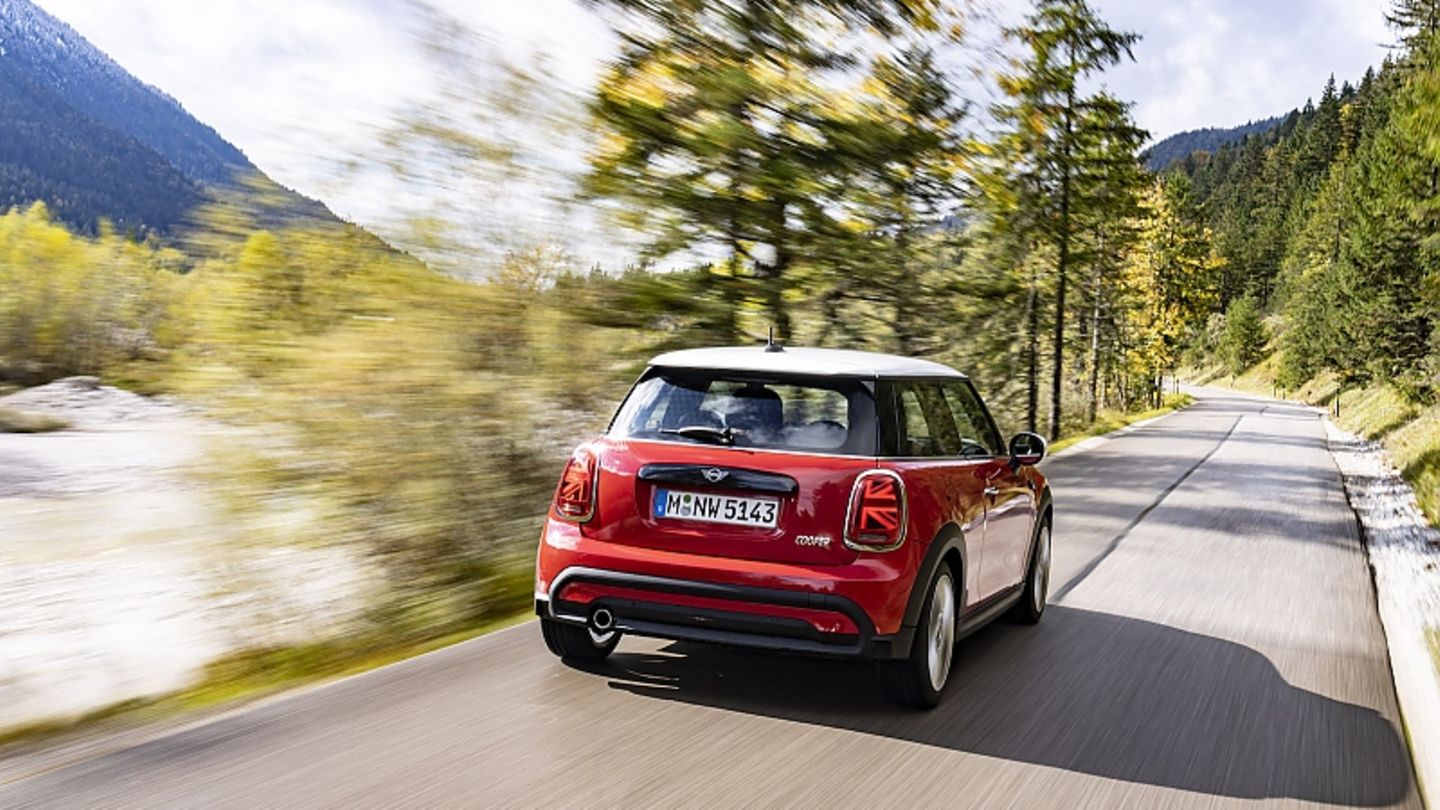The best way to drive a Mini has been the atmospheric Cooper S for years. But those who can do without 178 hp and are not bothered by the crackling sound of the three-cylinder should feel in good hands in the current Mini Cooper.
The Mini is just a great car. Of course, mostly attractively styled women from the urban environment sit in the trendy British and pace across the city on a shopping tour, coffee chat in the trendy shop or work in the agency. No wonder that the electric Mini Cooper SE has been in great demand for more than a year, despite its manageable range. But there is another way – classic with a combustion engine and if you want to top that, you can switch to a version with manual transmission. There is no question that it does not come close to the automated transmissions in the disciplines of comfort, shift times and fuel consumption. But it is just fun to switch manually again and the 1.5-liter three-cylinder turbo has not lost its little sonorous rattle sound, but it has steam, the little one.
Because the 100 kW / 136 PS / 220 Nm are always sufficient to be more than fast on the road. From standstill it goes to 100 km / h in 8.2 seconds and the digital display of the speedometer shows 216 km / h when the British front-wheel drive car pauses its forward thrust on the A8 motorway. The six-speed gearshift is not as crisp and robust as you would want it to be from a sporty small car, but the set-up is always good enough to be a lot of driving pleasure even on the winding country road. After the gear change has been initiated by stepping on the clutch, the individual speed levels slide through the individual levels and the supercharged three-cylinder always hangs atmospherically and directly on the gas. The faster it gets, the less you can achieve the standard consumption that Mini promises with 5.5 liters per 100 kilometers. The version with a nine-stage dual clutch gearbox consumes almost half a liter less on paper – in reality, the bill is even more clearly in favor of the automatic version. That too should be worth the extra price of 1,800 euros.
In addition to design and image, the chassis of the 1.2-ton Mini is probably the number three reason to buy. It’s tight, not hard and the direct coordination of springs, dampers, steering and brakes – all of this fits and makes the Cooper a real mini that is suitable for a driving machine. While the Mini-One versions are all too weak on the chest, the Cooper is a good compromise. With a similar consumption and significantly sportier performance, the 178 hp Mini Cooper S costs 27,000 euros more than the Cooper, at 27,000 euros. One or the other is all too happy to put this price difference into an upgrade of the meager standard equipment. Over the years, the instruments were digitized long overdue and the Mini has always been optimally networked. When others were still celebrating the digital channel search, you could already get into Foursquare here and smell it from the driver’s seat.
As good as the seats are, there is a lack of adjustment, because the mechanism for adjusting the backrest angle is nothing less than a faulty design. But lateral support and legrest fit and despite the comparatively low seating position, the clarity is good. It is hard to believe that Mini no longer wants to offer its subsequent new generation with leather seats. The finest of all upholstery fabrics and popular equipment details of most of the higher-quality mini models are being deleted in favor of creative plastic creations. It is questionable whether all customers can get used to it.
The space available in the 3.64 meter long front-wheel drive car is manageable and only dwarfs can take a seat in the rear, but the mini is a single car, in which at most a co-driver gets in. On the other hand, there is space for purchases, jackets or bags on the back seat because of the manageable loading compartment (211 liters) – legroom is not an issue anyway. The interior looks great and disguises the fact that the ergonomics are not the best. The leather steering wheel with its new buttons lies comfortably in the hand and for a long time now the various menu items on the 8.8-inch screen have been operated not only by touch, but also by voice. The central operating controller is all too hidden and not very conveniently deep between the seats. The situation is similar with the island of light that can only be touched over the left knee. Practical, but still not worth looking at, is the fold-out head-up display that slides out of the dashboard at the push of a button. There are better and fancier solutions here. Unlike the Mini Cooper itself, because it remains more unique than ever in its almost classless segment.
I am a 24-year-old writer and journalist who has been working in the news industry for the past two years. I write primarily about market news, so if you’re looking for insights into what’s going on in the stock market or economic indicators, you’ve come to the right place. I also dabble in writing articles on lifestyle trends and pop culture news.




